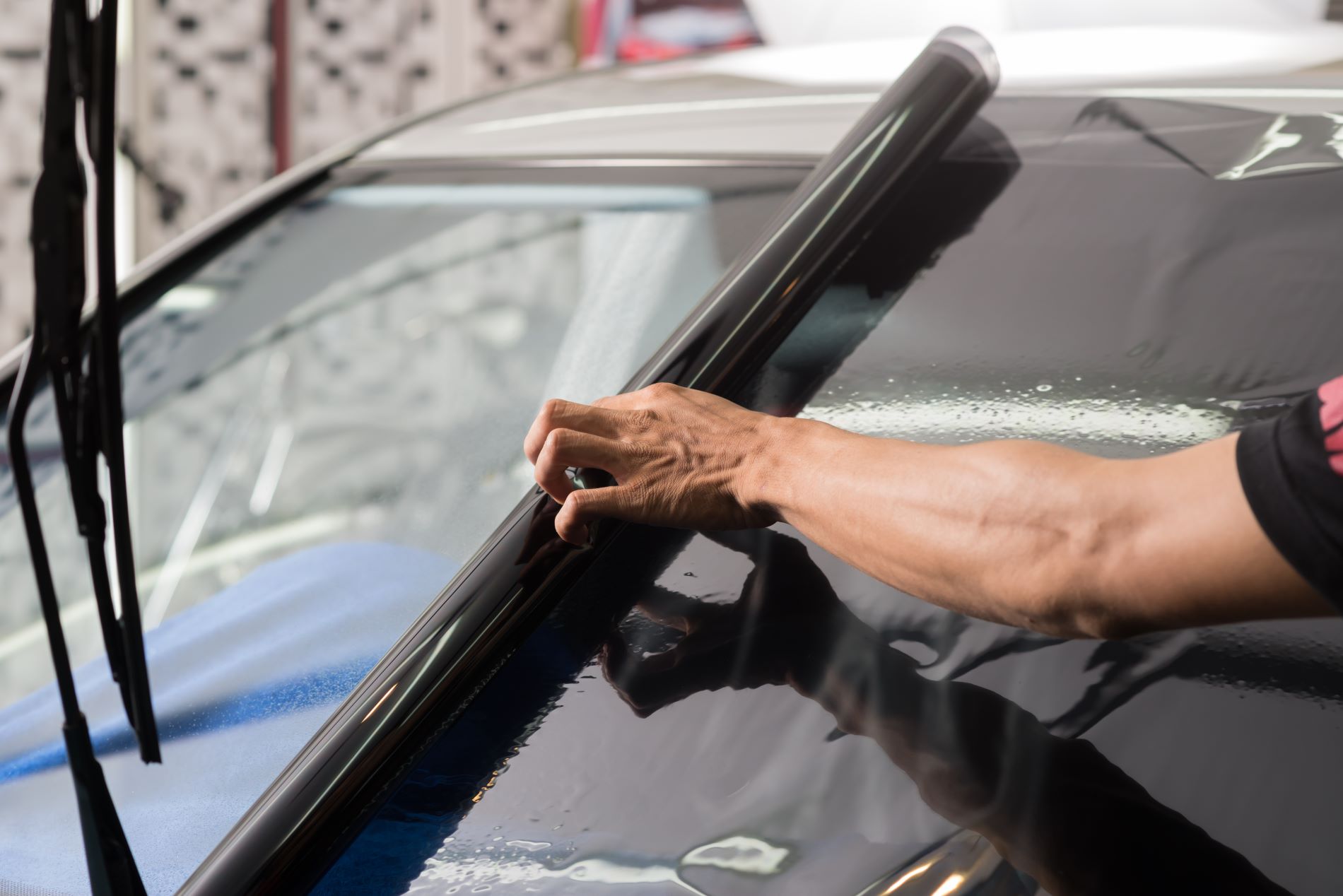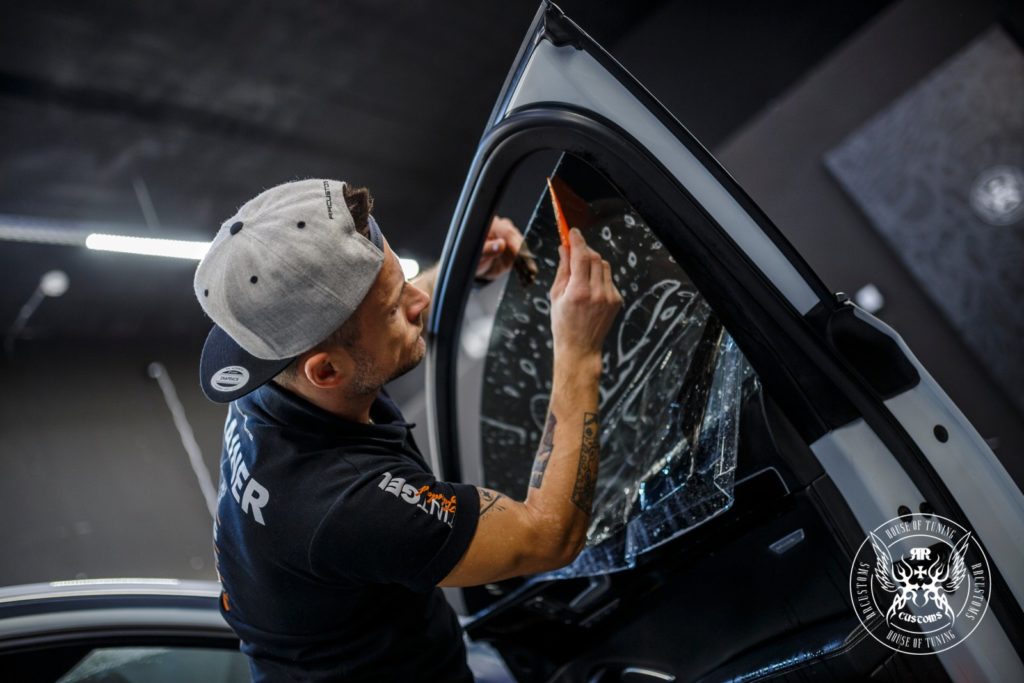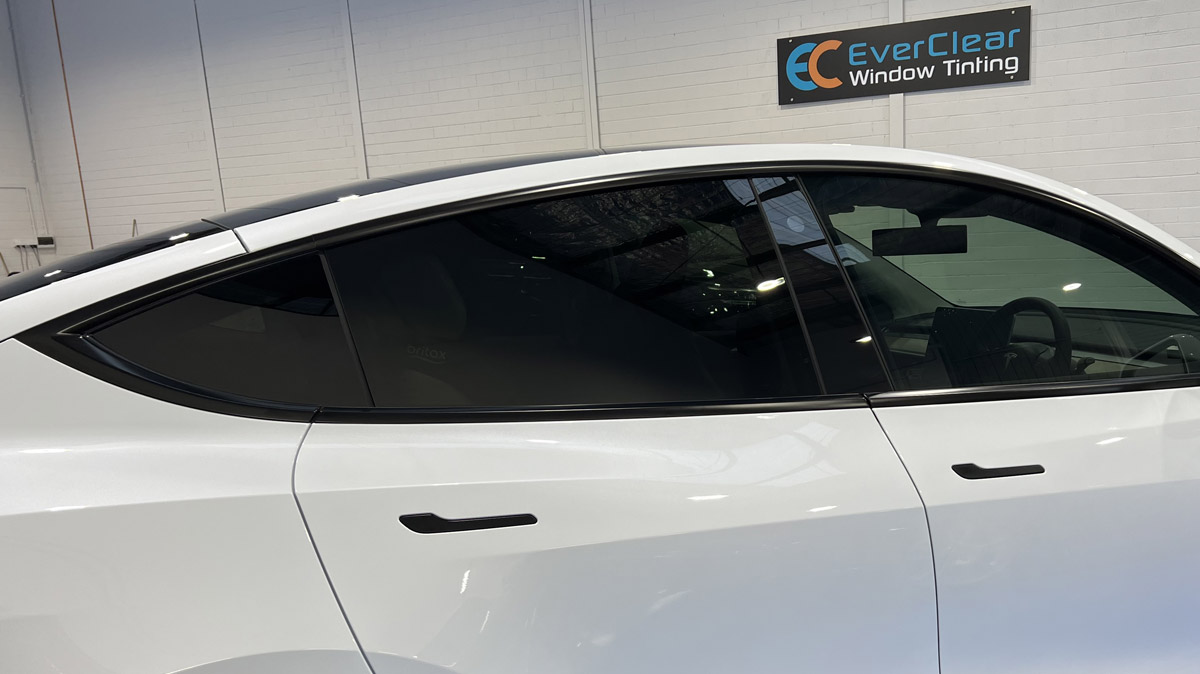A Comprehensive Overview to Understanding Vehicle Home Window Color and Its Benefits
Vehicle home window tinting offers greater than just a visual objective for cars. It provides different kinds, each with distinct attributes and benefits. Comprehending these choices, together with legal laws and maintenance suggestions, is vital for any type of lorry proprietor. The advantages might considerably improve driving convenience and lorry long life. As one discovers the nuances of home window tinting, the question develops: what type of color is finest matched for specific requirements?
Recognizing Car Window Tint: What It Is and How It Functions
Vehicle window color functions as a safety barrier that enhances car aesthetics while supplying practical advantages. This slim film is put on the interior surface area of vehicle windows, reducing glow and blocking harmful ultraviolet (UV) rays from the sun. By filtering sunshine, auto window color helps to manage the indoor temperature of the car, leading to enhanced convenience for passengers and reduced reliance on air conditioning.Additionally, it protects the car's interior from fading, maintaining both upholstery and control panel products. The color can also improve personal privacy, making it harder for outsiders to see inside the lorry. Particular types of window color can enhance security; in the occasion of an accident, the movie assists hold destroyed glass with each other, decreasing the danger of injury from flying fragments. Generally, automobile window color offers both aesthetic and functional functions, making it a preferred choice among car owners.
Kinds of Window Color: An Overview of Options
When taking into consideration window color alternatives, numerous types are offered, each with unique attributes. Colored, metalized, and ceramic window colors provide differing degrees of warmth denial, UV defense, and aesthetic charm. Recognizing these differences can help vehicle owners make notified selections based on their demands and preferences.
Colored Home Window Tint
Colored home window tint stands for a preferred option amongst car proprietors seeking a affordable and effective means to boost their vehicle's appearances and personal privacy. This sort of tint is produced by positioning a layer of color in between a protective covering and a glue layer, leading to a dark look that reduces glow and enhances aesthetic convenience. While colored home window color effectively blocks damaging UV rays, it might not use the very same level of warmth being rejected as other tint types. In addition, its color can discolor over time, possibly diminishing its efficiency. In spite of these disadvantages, colored window tint continues to be favored for its cost-effectiveness and ability to provide a sleek, fashionable want to various vehicle designs.
Metalized Home Window Tint
Metalized home window tint supplies a balance of design and performance, making it a preferred choice among cars and truck owners. This type of tint includes metal fragments within the film, improving both visual appeal and warm denial. The reflective high quality of metalized color aids to reduce glow and boost privacy, while also giving UV protection, which safeguards the lorry's inside. Additionally, metalized window tint can strengthen window stamina, potentially protecting against shattering throughout crashes. However, it is vital to keep in mind that the metallic elements can disrupt electronic signals, such as general practitioner and cell phone function. Generally, metalized window color offers an effective solution for those seeking a combination of sturdiness, sunlight, and look defense for their automobiles.
Ceramic Window Color
Ceramic window tint stands for a sophisticated option in the range of automobile home window films, supplying distinctive advantages over standard tints. Unlike dyed or metalized movies, ceramic colors utilize advanced ceramic fragments, which efficiently decline heat and UV rays without compromising visibility. This innovation assures that vehicles remain cooler, minimizing dependence on air conditioning and boosting fuel performance. In addition, ceramic window colors are less likely to hinder digital devices, such as general practitioner or mobile signals, making them a sensible choice for contemporary automobiles. Their resilience and scratch resistance add to a longer life expectancy compared to various other types of tints. Overall, ceramic home window color gives remarkable efficiency, comfort, and defense, making it a preferred alternative for critical car owners.
Advantages of Automobile Window Color: Beyond Appearances
While many individuals associate auto home window color with enhanced design, its advantages extend far past mere appearances. One substantial advantage is heat reduction; window color can obstruct approximately 99% of unsafe UV rays, keeping the indoor colder and safeguarding furniture from fading. This not only boosts comfort during hot climate however additionally decreases reliance on air conditioning, bring about boosted gas efficiency.In enhancement, car home window color provides an added layer of personal privacy and safety. Colored windows make it difficult for outsiders to see inside the vehicle, which can deter theft and secure valuables. Additionally, several tints enhance the glass, reducing the possibility of smashing in case of a crash, thus boosting safety.In addition to these practical benefits, car home window color can also add to glare reduction, enhancing visibility for motorists and guests alike. This multifaceted approach to comfort and security makes home window color a valuable financial investment for vehicle proprietors.
Legal Factors To Consider: Tinting Laws by State
Before dedicating to automobile window tint, automobile proprietors should browse an intricate landscape of tinting laws that differ by state. Each state has particular legislations regulating the acceptable degrees of tint darkness and reflectivity for various windows, consisting of windshields, front side home windows, and back windows. These laws typically include visible light transmission (VLT) percents, which dictate just how much light can pass via the tinted glass.Some states allow darker tints on back home windows while restricting front side and windscreen tints for safety and security reasons. Furthermore, particular states may require a certification from the supplier to verify conformity with tinting legislations. Breaching these policies can result in penalties, required removal of the tint, or both. Subsequently, it is essential for car owners to research their state's laws thoroughly to ensure lawful conformity before mounting window color. This diligence can conserve time and cash over time.
Selecting the Right Tint: Variables to Think about
When picking the ideal window color for a lorry, a number of crucial elements enter play. Tint darkness degrees, UV protection scores, and compliance with lawful regulations are vital factors to consider to ensure both visual appeals and capability - Car Glass Tinting. Evaluating these aspects will assist people make an enlightened decision that satisfies their needs and follows local legislations
Tint Darkness Degrees
Selecting the proper tint darkness level is essential for attaining the preferred balance between visual appeals and functionality in automobile window tinting. Different states have varying legal laws concerning color darkness, which can impact the option. Usually, colors are measured in portions, with reduced percentages indicating darker tones. Darker colors provide increased privacy and a streamlined appearance but can minimize presence, especially in the evening. On the other hand, lighter tints maintain an even more open feel, making certain sufficient visibility while still providing some warmth and glare reduction. Individuals should consider their driving habits, neighborhood laws, and personal choices when making a decision. Eventually, the appropriate color darkness level boosts the vehicle's appearance while guaranteeing safety and security and conformity with legal requirements.
UV Security Score
Tint darkness levels play a considerable role in the overall effectiveness of automobile window tinting, try these out yet an additional essential variable to evaluate is the UV defense score of the chosen color. This rating shows the percent of dangerous ultraviolet rays that the tint can block. Top notch colors usually give 99% or more UV defense, guarding passengers and the vehicle's interior from sun damage. Extended direct exposure to UV rays can result in skin issues and fading of upholstery, making a high UV security rating important for health and durability. When selecting window tint, consumers should prioritize this score alongside darkness degrees to guarantee maximum comfort and security while driving. Understanding these factors aids in making great post to read an educated decision when purchasing car home window tinting.
Legal Laws Compliance
Comprehending neighborhood lawful guidelines is essential for anyone thinking about vehicle home window tinting. Each state or region has particular regulations controling the allowed degrees of color darkness and reflectivity for various home windows. These guidelines frequently define the visible light transmission portion, establishing just how much light can travel through the colored glass. Non-compliance can cause penalties, mandatory removal of the color, or problems throughout automobile evaluations. In addition, some areas may have limitations on making use of particular tinting materials, calling for customers to select products that meet safety and security criteria. It is essential for vehicle proprietors to research their neighborhood legislations thoroughly prior to picking home window color to assure conformity and prevent potential lawful problems.
Installment Process: DIY vs. Professional Providers
Exactly how does one decide in between a do it yourself installation and hiring expert services for car window tinting? The choice frequently depends upon budget plan, experience, and preferred outcomes. A do it yourself method can be cost-efficient, allowing people to save money on labor prices. However, it needs a particular level of ability and knowledge regarding the tinting procedure. Those who are meticulous and client may locate success with DIY kits readily available in the market.Conversely, expert services use competence and top quality materials, making certain a flawless coating. Professionals frequently ensure their job, giving comfort versus possible issues such as bubbling or peeling. In addition, they are familiar with regional laws concerning tinting, which can be complicated for the typical vehicle owner.Ultimately, the decision mirrors an equilibrium in between expense, personal ability, and the anticipated top quality of the tinting work. Each alternative has its advantages, and the ideal selection relies on private scenarios and preferences.
Upkeep Tips: Maintaining Your Tint in Top Condition
Keeping the look and capability of home window color needs regular focus and treatment, particularly in varying weather condition conditions. To maintain the tint, it is vital to stay clear of using unpleasant cleansing products, which can damage the film or scratch. Car Glass Tinting. Rather, soft microfiber cloths and gentle, ammonia-free cleansers should be utilized for cleaning up the colored surfaces.Furthermore, it is suggested to wait a minimum of thirty day after installation before cleaning up the home windows to enable the color to fully adhere. Vehicle parking in shaded areas or making use of sunshades can assist reduce the fading results of UV rays and extend the color's life expectancy. Regular assessments for bubbles, peeling, or staining are recommended, as very early discovery can promote repair services. Preventing severe temperature changes, such as pushing warm home windows in chilly weather condition, will help maintain the color's honesty and look over time.
Often Asked Concerns

For How Long Does Home Window Color Usually Last on a Vehicle?
Window tint normally lasts between 5 to 10 years, relying on elements such as high quality, application, and ecological conditions. Routine maintenance and proper treatment can extend its lifespan, making certain optimal performance and look gradually.
Can Window Tinting Damage My Auto's Original Glass?
Window tinting, when used correctly, does not damage a car's original glass. Incorrect installment or low-quality products might lead to issues like peeling or bubbling, possibly impacting the glass's integrity over time.
Is Home Window Tinting Safe for All Types of Cars?

Will Window Tinting Space My Automobile Guarantee?
The concern of whether window tinting voids an auto service warranty often relies read this article on the supplier's plans. Generally, if the color does not harm the lorry, warranties generally stay intact. Nevertheless, seeking advice from the supplier is suggested.

Can I Eliminate Home Window Tint Myself if Needed?
Getting rid of home window tint oneself is feasible, but it needs careful focus to prevent harming the glass. People need to utilize appropriate devices and methods to guarantee an effective removal without leaving sticky deposit or scrapes behind. While colored home window tint properly blocks dangerous UV rays, it might not offer the exact same degree of warm denial as other color types. Ceramic window color represents an advanced alternative in the spectrum of automobile home window films, using distinct advantages over standard colors. Prior to dedicating to automobile home window color, car owners should navigate an intricate landscape of tinting laws that differ by state. These policies frequently consist of visible light transmission (VLT) percents, which dictate exactly how much light can pass via the tinted glass.Some states permit darker tints on rear home windows while restricting front side and windshield tints for safety factors. Color darkness degrees play a considerable function in the total effectiveness of automobile window tinting, but an additional vital factor to assess is the UV protection score of the selected color.